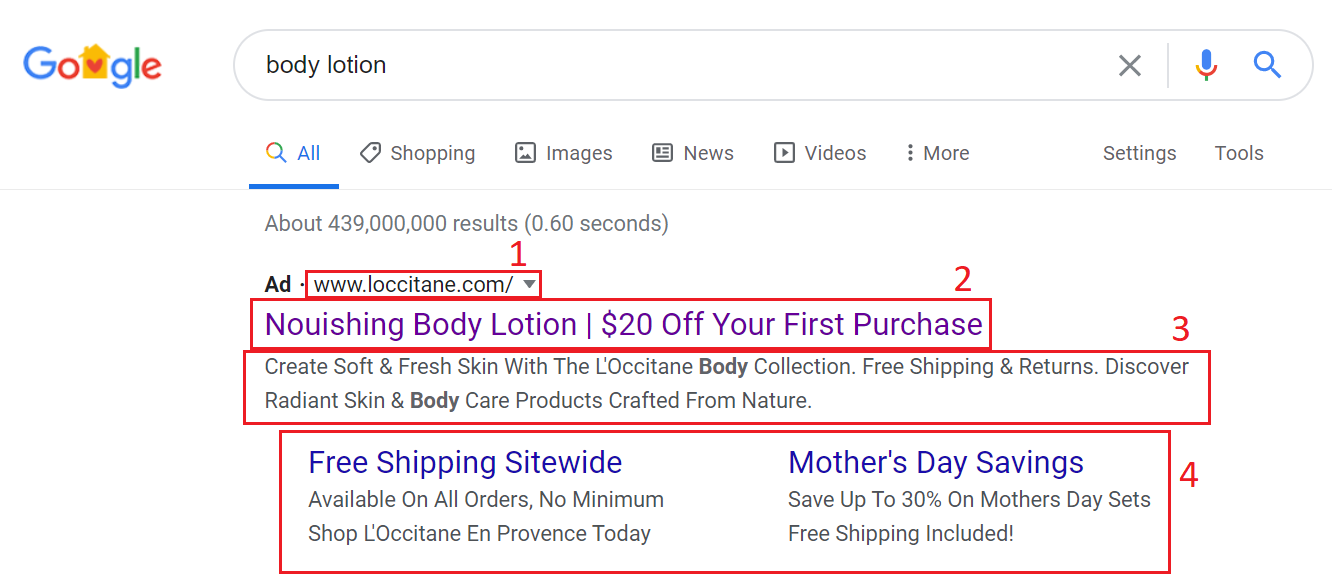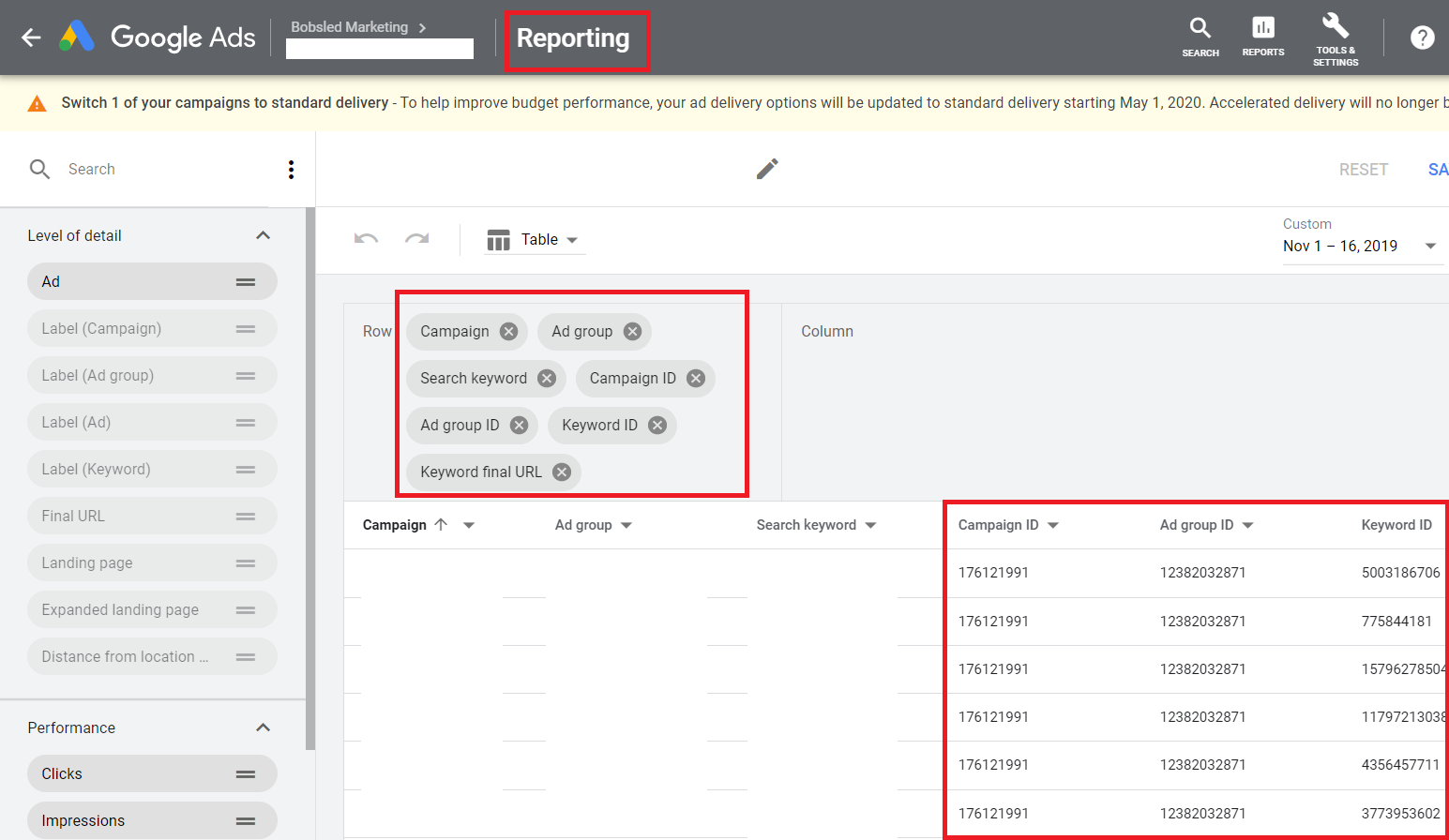Amazon-focused brands are missing out on valuable traffic by ignoring Google Search ads.
It’s easy for brands competing on the Amazon marketplace to fall into the trap of becoming too Amazon obsessed. Sellers and vendors set out to master the channel from the inside out, and in the process they neglect outside opportunities that can deliver great results, quickly.
One such opportunity involves creating Google Search Advertising PPC campaigns that will deliver Google traffic to your Amazon listings. We had a chat with Danica Petrovic, Bobsled PPC Specialist, about the specifics of this paid customer acquisition method.
Hi Danica! Why is Google Search Advertising useful to brands that are selling on Amazon?

Google Search ads can facilitate rapid revenue growth. By implementing Google Search Advertising (GSA), you’re gaining an advantage over brands that are only advertising within the Amazon ecosystem.
Unlike native Amazon Advertising PPC placements, Google ads can lead to sales on non-Amazon channels where you may have better profit margins.
If they lead to a conversion on Amazon, this will have a positive impact on your Best Seller Ranking (BSR), which will in turn help you generate more sales in the future.
Tapping into non-Amazon traffic through GSA is particularly useful when you have specific marketing goals e.g. new product launches.
Which type of Amazon brands could expect to see positive results from Google Search Advertising?
There is no “one size fits all” answer to this question. There are many things that should be taken into consideration when determining if your brand should proceed with GSA.
That being said, in my experience the brands that have had success in expanding their advertising from Amazon to GSA are:
- Well established (high brand recognition)
- Top ranking brands in the category
- They have a unique product/s with unusual yet predictable search terms
- Their product is high priced (around or above $100)
- They have enough advertising budget to spread effectively across multiple channels
- Their website has a lot of traffic which can be used to tailor your GSA campaigns
- Hitting the ceiling in terms of customer demand from Amazon alone
If several of these parameters describe your brand, there’s a good chance you’ll see success with GSA. If your brand doesn’t seem to be in the right position to benefit from GSA, we’d encourage you to take a read of Bobsled’s 2020 Amazon Brand Awareness Guide.

How Is Google Search Advertising Different From Amazon Advertising?
Potential customers on Google are mostly (if not all) at the awareness/interest phase near the top of the sales funnel. Whereas Amazon shoppers are typically further down the funnel – they are completing final comparisons before making a purchase.
Both platforms function using the same broad principles (Pay-Per-Click advertising, with second price bid auctions) but setting up campaigns in Amazon is a lot easier and quicker compared to Google. Some more important distinctions include:
- Keywords you put in your Google campaigns are competing against each other
- In most cases broad match type on Google will only eat up your budget – it’s best to use broad modifier
- Compared to Amazon Advertising, the GSA system is more robust with many different campaign/ad/targeting options – this gives you lots of opportunity to test different campaign set-ups. GSA also gives you a huge amount of data (reports) to process and get more educated guesses on what’s working and what isn’t (Google Analytics).

Above: The Anatomy of a Google Search Ad
1 – Final URL: the landing page
2 – Headlines 1 and 2 , separated with “|” mark
3 – Description
4 – Extensions: sitelink extensions
What are some important things to think about when developing a Google Search Advertising strategy?
First and foremost, it’s important to note that, in my opinion, the vast majority of ecommerce businesses would be better off starting with Amazon and their own website. This is simply because each new funnel requires more marketing budget to make the venture worthwhile, and in most situations it’s better to consolidate these two sales channels first before expanding to GSA.
Once you have built a solid foundation with Amazon and your own website, setting up a GA account can be completed in a few simple steps – you just need your credit card and email address.
Product selection for GSA will depend on the specifics of your goals.
- Do you wish to boost sales for only one product or a whole catalogue?
- Do you wish to drive traffic only to your Amazon Storefront or individual product listings?
- Do the advertised products need to be sold at full price or are you running a discount promo for a limited time to increase the chances of conversion from paid ads?
In most situations, the 80/20 approach would be to start with your best seller(s) and to drive traffic to Amazon product pages. However, if your storefront has a high conversion rate you should consider building additional campaigns with the Storefront as a landing page and testing to see what path to conversion is most effective. The budget should be at least $50/day – you will need to monitor the campaigns’ performance daily to ensure that you are not running out of budget.

What is the typical timeline for getting started with Google Search Ads?
If you are new to GSA you should be willing to commit to at least 3 months on the platform. Anything less will not give you enough data about the viability of GSA as a customer acquisition channel.
Perhaps you already have campaigns set up in your GSA account. If so, perform an in-depth analysis of what worked first time around – you may be able to recycle parts of your old strategy. Keep in mind customer behavior, promotions you were running at the time, the seasonality of your product, and any other variables that may have impacted performance then vs now.
In the first month you should closely monitor your campaigns (keyword performance, budgets etc) to ensure everything is going to plan. Do this daily for the first 2 weeks and then relax this to a few times per week if the results are favorable.
Depending on your budget and overall strategy, you may decide to launch multiple campaigns at the very beginning. But to avoid wasting time and ad budget, you can test the waters by launching the bare minimum of campaigns for your best sellers only, and each week you can add new extensions, new keywords, and create campaigns for other products.
Importantly, keyword optimization should be performed weekly and unprofitable keywords should be paused. Of course ‘unprofitable’ may have different meanings depending on the nature of your goals, but in general those are the keywords that have no conversion or unacceptably low ROI.

How do you track the performance of Google Search campaigns in relation to Amazon?
You do this through the Amazon Attribution tool and your brand’s Storefront.
You will need to generate source tags from the Storefront and implement it within the GSA campaigns that have your Storefront as a landing page.

Above: Hit the yellow ‘Create source tag’ button on the Insights tab within the Storefront section of your Seller Central dashboard.
For the Attribution tool you will need to generate a source tag for each campaign, adgroup and keyword and upload it to your Attribution account.

Above: Find the source tags in the ‘Reporting’ section of your Google Ads dashboard.
Let’s assume Brand X is established on Amazon and their own ecommerce website is thriving, but they have yet to create any Google Search ads. As their GSA efforts scale up, what changes would you expect to see on Brand X’s different sales channels?
This is a common question for Amazon-focused brands who are interested in launching on GSA. Google Search Ads can drive traffic to Amazon or to a website, or both.
If Amazon is your main sales channel, you can push it even more with GSA. Amazon has a loyal customer base and is the number one sales channel in the US. So Amazon-focused brands can use GSA to get more eyeballs on their products, and typically the path of least resistance to a sales conversion will be through the Amazon channel. If your brand falls into this category, and you implement successful GSA campaigns, expect your Amazon sales to increase but your Amazon Advertising results to remain consistent. Over time, your GSA efforts may actually help improve your Amazon Advertising metrics, as the increased sales velocity and more product reviews will help the efficiency of your native Amazon PPC spend.
Rather than boosting short-term sales, perhaps increasing brand awareness is the more pressing priority. In this case, it may be better to drive at least a portion of your GSA traffic to your website. A website can do a better job of telling a brand’s story compared to an Amazon Storefront, so this is likely the better option if you want to make a unique impression on a potential new customer. If you’re in this brand awareness state of mind, I’d also recommend you consider utilizing Amazon DSP – read our blog post Utilizing Amazon DSP To Drive Growth to learn more.

Above: Amazon Storefront screenshot illustrating the traffic boost delivered by Google ads.
What are results you have observed from brands who have launched Google Search ads to help boost results on Amazon?
See the Amazon Advertising & GSA results from a Bobsled client listed in the tables below. This client is a well established brand selling niche products in the electronics category, with price points greater than $100.
| Month | PPC Spend Amazon Advertising | PPC Sales Amazon Advertising |
| 9/30/2019 | $10,241.16 | $102,375.84 |
| 10/31/2019 | $11,501.53 | $118,505.25 |
| 11/30/2019 | $14,363.23 | $151,259.29 |
| 12/31/2019 | $18,375.05 | $238,231.35 |
| 1/31/2020 | $11,633.41 | $125,759.24 |
| 2/29/2020 | $11,091.58 | $114,286.40 |
| Month | PPC Spend Google Search (driving traffic exclusively to Amazon) | PPC Sales Google Search (for conversions that occurred on Amazon) |
| 9/30/2019 | $628.14 | $6,202.37 |
| 10/31/2019 | $900.90 | $7,781.28 |
| 11/30/2019 | $1,386.01 | $9,942.50 |
| 12/31/2019 | $762.74 | $3,895.50 |
| 1/31/2020 | $1,216.02 | $6,145.52 |
| 2/29/2020 | $1,205.75 | $8,016.75 |
As Google Search ads meet customers typically closer to the top of the sales funnel, the GSA budget is much lower than Amazon Advertising, and the conversion rate is not quite as strong. Over time, we expect the GSA budget to increase gradually until we hit the point of diminishing returns. So far Bobsled’s GSA management efforts have helped this client strengthen their Amazon positioning through acquiring new customers profitably via Google.
NEED HELP UNDERSTANDING & IMPLEMENTING GOOGLE SEARCH ADVERTISING?
If Google Search Advertising is the right solution for your brand, now is the time to learn more! A Bobsled expert is waiting to get you up to speed. Click the button below & complete the form to request a consult – it’s free and there’s no commitment involved.
{{cta(‘eb1af507-8c4f-4baa-b81b-695ac49ba8bb’,’justifycenter’)}}


